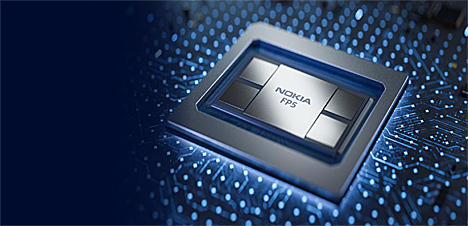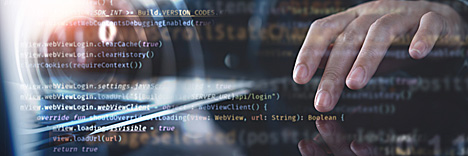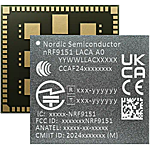Elintoimintojen seuranta on prosessi, jossa mitataan ja seurataan keskeisiä fysiologisia parametreja yksilön yleisen terveyden ja hyvinvoinnin arvioimiseksi. Se luo uusia mahdollisuuksia niin hyvinvointi- ja kuntosovelluksille kuin lääketieteellisillekin sovelluksille, kattaen sydämen toiminnan analyysin, hengitystaajuuden, happisaturaation, verenpaineen ja kehon lämpötilan mittauksen. Nykyään elintoimintoja seurataan yleensä ottamalla ajoittaisia otoksia esimerkiksi sydänfilmeillä (EKG), verensokerin mittauksella, happisaturaation seurannalla ja verenpaineen mittauksilla, usein suurikokoisia laitteita käyttäen. Uudet teknologiat mahdollistavat erilaisten terveysparametrien jatkuvan mittaamisen, mikä auttaa havaitsemaan ja ennakoimaan elinten, kudosten ja aineenvaihduntareittien toimintahäiriöitä.
Uudet teknologiat auttavat terveydenhuollon ammattilaisia tunnistamaan ja hallitsemaan terveysongelmia etänä. Tämä voi säästää aikaa ja kustannuksia sekä parantaa onnistumista hätätilanteiden ennakoinnissa ja hallinnassa. Lääketieteellisten laitteiden, kuten sydänmonitorointiin tarkoitettujen nauhojen, elektronisten iholaastareiden ja muiden kannettavien laitteiden, käyttö kasvaa, mikä nopeuttaa sairaalahoitoa korvaavia ratkaisuja vaarantamatta potilasturvallisuutta. Tämä hyödyttää merkittävästi kansallisia terveydenhuoltojärjestelmiä vähentämällä kustannuksia ja samalla säilyttäen korkeatasoiset terveyspalvelut.
Älykellot ja -rannekkeet, älykuulokkeet ja -päähineet, älysormukset, kuntoseurantalaitteet, sydänmonitorointinauhat ja muut henkilökohtaiset kannettavat elektroniset laitteet sisältävät uutta teknologiaa käyttäjän terveydentilan ja suorituskyvyn seuraamiseen ja parantamiseen. Näiden laitteiden avulla ihmiset voivat saada tietoa terveydestään eri tilanteissa, ja urheilijoiden suorituskykyä voidaan parantaa, sillä laitteet tarjoavat tietoa esimerkiksi sykkeestä, nestetasapainosta ja lihastoiminnasta.
Nämä kannettavat tuotteet edustavat erilaisten teknologioiden, kuten materiaalitieteen, anturiteknologian, bioantureiden, elektroniikan, mikrofluidiikan ja tekoälyn, kohtaamispistettä. Ne mullistavat kuluttajille suunnatun terveydenhuollon tarjoamalla reaaliaikaista seurantaa ja tiedonkeruuta ei-invasiivisella ja kätevällä tavalla.
STMicroelectronicsin artikkeli on ilmestynyt uusimmassa ETNdigilehdessä, jota pääset lukemaan täällä.
Tässä artikkeli kokonaisuudessaan.
REMOTE MONITORING IS CHANGING HEALTHCARE
Digital transformation places the roles of the user and patient at the center of the healthcare revolution. In digital healthcare, remote patient monitoring is designed to measure vital signs and other key parameters using non-invasive devices that wirelessly transmit patient information to healthcare providers or other health stakeholders, while ensuring confidentiality.
Monitoring of vital signs is the process of measuring and tracking important physiological parameters to assess the overall health and wellbeing of an individual. It is paving the way to new opportunities for both wellness/fitness and medical applications, ranging from heart analysis, respiration rate and oximetry to blood pressure and body temperature. Nowadays, common practice is to sample periodic snapshots of vital signs by electrocardiograms, glycemia level, oximetry and blood pressure through examinations using bulky devices. New technologies enable continuous measurement of the different health parameters to infer and predict malfunctions of organs/tissues and metabolic pathways.
The new technologies help healthcare providers detect and manage health conditions remotely. This can save time and costs and can also increase success in predicting and managing emergency cases. Use of medical-grade devices such as cardiac bands, electronic skin patches, and other wearable devices are increasing to accelerate de-hospitalization without compromising patient safety. This benefits national healthcare systems significantly by reducing costs while maintaining the high quality of healthcare services.
Smart watches and wrist bands, smart hearables and headsets, smart rings, fitness trackers, cardiac bands and other wearable personal electronic devices embed new technologies for monitoring and improving user condition and performance. People can become aware of their health status in different contexts, and athletes' performance can improve since the devices provide insights into factors such as heart rate, hydration levels, and muscle activity.
These wearable products represent a point of convergence of multiple technologies such as materials science, sensing and sensors, biosensors, electronics, microfluidics, and artificial intelligence, revolutionizing the consumer healthcare segment by providing real-time monitoring and data collection in a non-invasive and convenient way.
TECHNICAL CHALLENGES
Beyond the well-known technical challenges such as ergonomics, user convenience, patient safety, data security and connectivity, there are other critical aspects that semiconductor manufacturers should address. Critical points are power consumption and battery life, big data management, and medical reliability of extracted health indicators. By addressing these critical points, the development of health monitoring technologies can lead to reliable, user-friendly, and medically approved devices that can play a significant role in preventive healthcare, chronic disease management, and overall health and wellness.
For instance, continuous monitoring of the heart, the electrocardiography (ECG), is a power-consuming process that produces a large quantity of data that commonly needs to be managed, processed, and transmitted to the cloud for analysis. Moreover, the extracted data needs to be transmitted back to the wearable device for advising or alerting the user.
All these factors represent technical challenges that the semiconductor industry needs to address to ensure devices’ on-field efficacy and deliver satisfactory user experiences.
SEMICONDUCTOR AND BIOSENSOR SOLUTIONS
A variety of medical and consumer biosensors is now available to enable the design of wearable devices. Most of these sensors come with analog front-end components to simplify signal conditioning. However, they are usually driven by an external microcontroller to perform data processing and health-indicator extraction. The system complexity increases with the incremental use of multiple sensors for deducing more health-related outcomes.
STMicroelectronics is approaching this market with a new family of biosensors that offer on-chip analog sensing, the vertical analog front-end (vAFE), for electrocardiography (ECG) and electroneurography (ENG), a highly sensitive motion sensor (accelerometer and gyroscope) for seismocardiography (SCG), analog-to-digital conversion, features for human body motion tracking and embedded digital processing with artificial-intelligence resources that offload the microcontroller.

Together with ST, LifeSignals has developed the world’s first and only single-chip Life Signal Processor (LSP) silicon chip.
These are unique semiconductor chips combining motion and bio-signal sensing in one device, enabling a multi-purpose platform where for instance ECG signals can be extracted and processed for computing heart rate and heart-rate variability, SCG signals can be extracted for computing the diastolic and systolic period to verify the opening and closure of the aortic and mitral valves (valvular heart-disease detection), and where both ECG and SCG signals can be processed for deriving further health indicators with the great advantage of full time synchronization. In other applications ENG signals can be used for cognitive-readiness analysis, for instance applied to athletes after concussion.
ST’s new biosensors, exploiting the integration of motion and bio-signal sensing, can enable novel features such as motion-artifact compensation and context-aware bio-signal measurements. The latter is valuable for increasing battery life since the biosensor understands the user context and activity, and the system can thus adapt the bio-signal acquisition setting and frequency accordingly.
ST MEMS biosensors are enabling the following applications in the field of healthcare wearable devices:
- Home monitoring: ECGs and SCGs can be used by individuals to monitor their heart health at home. This can help identify potential problems early on and seek medical attention if necessary.
- Activity tracking: ECGs and SCGs can be used to track heart-rate variability (HRV), which is a measure of how well the heart responds to stress. HRV can be used to assess overall health and fitness, and to detect early signs of stress and anxiety.
- Athletic training: ECGs and SCGs can be used to monitor athletes' heart health during training and competition. This can help prevent overtraining and identify potential cardiovascular problems. In addition, ENGs can monitor the readiness to play sports again after a trauma event like concussion.
- Remote patient monitoring and telehealth: ECGs and SCGs can be used for telehealth appointments, allowing patients to have their ECGs taken remotely by a healthcare provider.

The figure shows an example of a remote monitoring system based on ST components.
Recent studies [1][2] have demonstrated how the combination of these two sensing channels, ECG and SCG, can enable the indirect measurement of blood pressure. Further, more connectivity functionalities can be added like NFC, NB-IoT, and secure connections. ST also offers low-power and high-performance STM32 microcontrollers, high-precision operational amplifiers, and a variety of AC-DC and DC-DC power-management and supply ICs, in addition to wireless-connectivity solutions.
In the semiconductor industry, there is a growing trend towards the development of more sophisticated biosensors. These sensors are specialized in detecting and measuring vital human-body analytes, including glucose, sodium, lactate, and calcium. Such advancements are significant for healthcare as they promise to enable continuous monitoring of these analytes in a less invasive way, which is essential for managing various health conditions and improving patient outcomes.
The semiconductor sector is also seeing investment and research efforts directed toward the next generation of low-power sensors designed with the capability to continuously monitor human body temperature, which is a critical vital sign.
The development of such technology is part of a broader initiative to enhance sensor portfolios for health and wellness applications, enabling more comprehensive and non-invasive monitoring of vital signs.
In conclusion, ST is committed to helping customers and stakeholders in the healthcare ecosystem to develop the most advanced digital-health technologies and solutions to improve health and wellbeing, patient monitoring, and diagnostics applications with affordable and non-invasive medical systems and solutions.


















 Autoteollisuus on siirtymässä yhä monimutkaisempiin ohjelmistopohjaisiin järjestelmiin, joissa virheetön ohjelmisto on elintärkeää turvallisuuden ja suorituskyvyn varmistamiseksi. Ohjelmiston laatu ja luotettavuus eivät ole enää vain valinnaisia ominaisuuksia, vaan kriittisiä vaatimuksia erityisesti autonomisessa ajamisessa, kehittyneissä kuljettajaa avustavissa järjestelmissä (ADAS) ja yhdistetyissä ajoneuvojärjestelmissä.
Autoteollisuus on siirtymässä yhä monimutkaisempiin ohjelmistopohjaisiin järjestelmiin, joissa virheetön ohjelmisto on elintärkeää turvallisuuden ja suorituskyvyn varmistamiseksi. Ohjelmiston laatu ja luotettavuus eivät ole enää vain valinnaisia ominaisuuksia, vaan kriittisiä vaatimuksia erityisesti autonomisessa ajamisessa, kehittyneissä kuljettajaa avustavissa järjestelmissä (ADAS) ja yhdistetyissä ajoneuvojärjestelmissä.
 Kestävä digitaalinen infrastruktuuri on kriittinen, jotta tietoliikenneverkot voidaan tehokkaasti valjastaa tekoälyinnovaatioiden ja pilvipohjaisten palveluiden tarpeisiin. Tekoälyyn liittyvien datarikkaiden sovellusten lisääntyvä kysyntä edellyttää tietoliikenneverkkoa, joka kykenee käsittelemään suuria tietomääriä alhaisella viiveellä, kirjoittaa Orange Businessin kumppaniratkaisuista vastaava Carl Hansson.
Kestävä digitaalinen infrastruktuuri on kriittinen, jotta tietoliikenneverkot voidaan tehokkaasti valjastaa tekoälyinnovaatioiden ja pilvipohjaisten palveluiden tarpeisiin. Tekoälyyn liittyvien datarikkaiden sovellusten lisääntyvä kysyntä edellyttää tietoliikenneverkkoa, joka kykenee käsittelemään suuria tietomääriä alhaisella viiveellä, kirjoittaa Orange Businessin kumppaniratkaisuista vastaava Carl Hansson. Euroopan unioni ottaa merkittävän askeleen avaruusteknologian kehittämisessä allekirjoittamalla sopimuksen uuden IRIS²-satelliittijärjestelmän toteuttamisesta. Tämä 290 satelliitin verkko on suunniteltu vahvistamaan Euroopan itsenäisyyttä ja turvallista yhteydenpitoa.
Euroopan unioni ottaa merkittävän askeleen avaruusteknologian kehittämisessä allekirjoittamalla sopimuksen uuden IRIS²-satelliittijärjestelmän toteuttamisesta. Tämä 290 satelliitin verkko on suunniteltu vahvistamaan Euroopan itsenäisyyttä ja turvallista yhteydenpitoa.




 Matalatehoisten langattomien ratkaisujen asiantuntija Nordic Semiconductor ja eSIM-ratkaisuja kehittävä Kigen ovat julkistaneet yhteistyön, joka sujuvoittaa massiivisten IoT-verkkojen käyttöönottoa. Yhdessä he esittelevät CES 2025 -messuilla ratkaisun, joka yhdistää Nordic Semiconductorin nRF9151-moduulin ja Kigenin SGP.32 IoT eSIM-teknologian sekä laitteiden hallinta-alustan.
Matalatehoisten langattomien ratkaisujen asiantuntija Nordic Semiconductor ja eSIM-ratkaisuja kehittävä Kigen ovat julkistaneet yhteistyön, joka sujuvoittaa massiivisten IoT-verkkojen käyttöönottoa. Yhdessä he esittelevät CES 2025 -messuilla ratkaisun, joka yhdistää Nordic Semiconductorin nRF9151-moduulin ja Kigenin SGP.32 IoT eSIM-teknologian sekä laitteiden hallinta-alustan.





